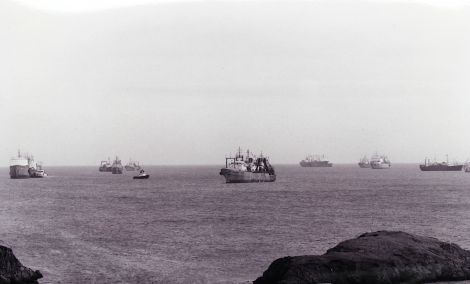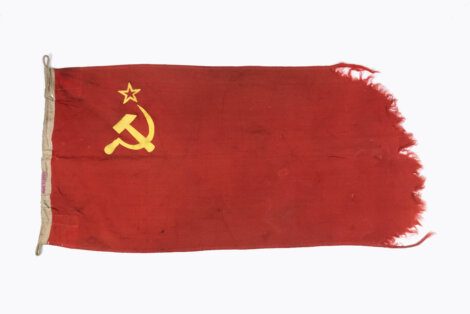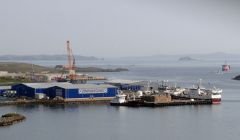History / Klondyker items to go on display in Cold War exhibition
ITEMS related to the arrival of klondyker ships in Shetland are set to feature in a national exhibition about Scotland’s connection with the Cold War.
A large hammer and sickle emblem and flag retrieved from the Soviet factory-fishing ships that docked in Shetland in the 1980s are among the items on loan from Shetland Museum which will go on show.
The National Museum of Scotland’s Cold War Scotland exhibition will take place between 13 July this year and 26 January 2025.
Scotland’s combination of geography and topography provided a useful base for Allied military preparations and research during the Cold War, a 40-year nuclear stand-off between the USA and the Soviet Union following the end of the Second World War.
While relations between NATO countries and the Soviet Union were characterised by mistrust and animosity, formal and informal relations in Scotland continued.
This was evident in Shetland, where Soviet factory-fishing ships known as ‘klondykers’ regularly docked at Lerwick Harbour.
The exhibition will include objects from these fishing ships, gifted by their crew to the people of Shetland.
At the same time, local volunteer observers were trained to operate four nearby underground monitoring stations and measure radiation in the event of a nuclear attack.
The exhibition will explore both the visible and invisible legacies of the Cold War in Scotland
First hand testimony will reveal the ways in which the war lingers in Scottish politics, culture and memory.
The exhibition will also showcase the work of Shetland-based artists Roxane Permar and Susan Timmins who create collaborative work based on perceptions of the Cold War on both sides of the Iron Curtain.
Become a member of Shetland News
A selection of their enigmatic photographs of abandoned Cold War listening stations in Shetland illustrate the physical remains of conflict still evident across the Scottish landscape, National Museums Scotland said.
Principal curator of technology at National Museums Scotland Meredith Greiling said: “From nuclear submarines to lively peace protests and observation stations perpetually monitoring for devastating attack, the Cold War permeated every aspect of life in Scotland for decades.
“It is important to be able to share these remarkable stories from Shetland with visitors and I hope it inspires them to learn more a period of Scottish history that is so often overlooked.”
Carol Christiansen, curator at Shetland Museum and Archives, said: “Shetland experienced a very human side of the Cold War.
“Klondyker crews, arriving with little money and few resources, found friendship and support among the Shetlanders.
“Locals provided food from their gardens and donated unwanted but repairable items for the crews to take back to their home countries.
“Several factory ships wrecked in inshore waters, their remains still on the seabed. Crews were saved by the coastguard and helped by the local population until they could be returned home.
“The annual migration of Eastern Bloc fish factory ships to Shetland’s waters was a unique period in the islands.”
Follow our general election coverage here:
Become a member of Shetland News
Shetland News is asking its many readers to consider paying for membership to get additional features and services: -
- Remove non-local ads;
- Bookmark posts to read later;
- Exclusive curated weekly newsletter;
- Hide membership messages;
- Comments open for discussion.
If you appreciate what we do and feel strongly about impartial local journalism, then please become a member of Shetland News by either making a single payment, or setting up a monthly, quarterly or yearly subscription.

































































